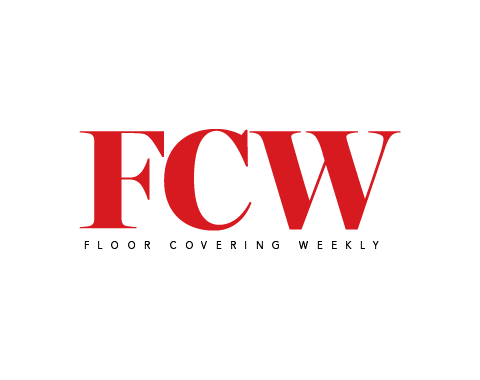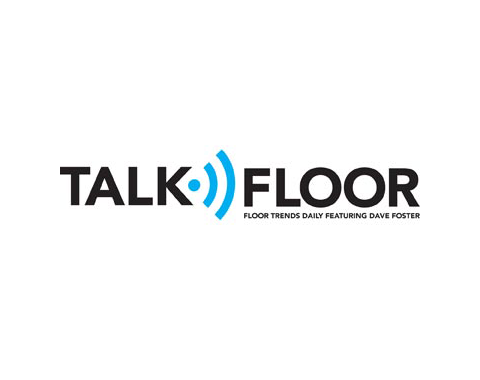Real Floors Inc. Execs Plan for Growth in Multifamily Housing

August 3, 2022
In July, Real Floors Inc., a family-owned provider of flooring in the multifamily, commercial real estate and single-family rental industries based in Marietta, Georgia, announced that it is merging with Arbor Contract Carpet, based in Irvine, Texas. Real Floors Inc., which will include Real Floors, Real Floors Commercial and Arbor, now has more than 700 employees in 12 states with 28 locations serving over 50 markets coast to coast.
In 2021, the three companies reached combined sales of more than $400 million, which included $325 million in replacement services and $75 million in new construction. Real Floors Commercial is a member of the Commercial USA buying group.
Floor Trends recently caught up with Real Floors Inc. CEO Adam Brookner, President Matt Gilbreth and Chief Customer Officer Lyn Jacobs to learn more about what’s in store for the merged venture and their outlook on the multifamily market.
Floor Trends: How did this merger come about?
Adam Brookner: Matt and I have been talking for many years, just at a high level, sharing a lot of the same challenges in the industry. It became clear that we shared a set of values. We looked at what was happening around the industry, both from a competitive standpoint and from a customer standpoint, and we really felt like we would be best equipped to serve our industry together. There’s no secret that there’s been consolidation within our customer base. Taking what both companies did so well in their respective markets and bringing that to a national platform was very appealing, and we felt that the timing was right to bring that to market.
Floor Trends: What does it mean for your customers?
Lyn Jacobs: Being able to have this level of coverage for our existing client relationships was incredible. We’ve had customers begging us to come to Atlanta and Nashville for many years, and the same thing could be said for Adam and his team. Those questions bubble up through the sales organization on a weekly basis.
Brookner: It was a rare opportunity to bring two very similar companies together from a cultural standpoint. To have somebody out there who can provide a consistency of service coast to coast in 28 different markets across the country—that, ultimately, is to their benefit. We want to be easy to work with. We are striving towards operational consistency and that ultimately just takes one more item off their list of things they have to worry about.
Floor Trends: You mentioned company culture is a natural fit for both organizations.
Matt Gilbreth: I thought that was one of the most interesting things when Adam and I first started talking of how we view ourselves and how we view our employees and our subcontractors—we’re all interrelated. We work really hard, but we also don’t want to take ourselves too seriously. We all have a little bit of self-deprecating humor. We want to enjoy our work lives we; we spend a lot of time with these people. The focus is the Real Floors family. When you know some of our competitors, you know that they don’t view their subcontractors or their employees in that same light.
Brookner: Both companies being value driven above all else was clear very early on.
Jacobs: One of the stories that I share internally with our people is that Adam and Matt had the foresight to hire an outside consulting firm to put us together. The first meeting with the consultants was about how are you going to measure success of this merger? The resounding answer from both Adam and Matt— almost speaking over each other—was employee satisfaction and retention—making sure that we have the right people staying with the organization. It’s a walk the walk thing—not just to talk the talk—about people and culture and the values. That impressed me very, very much.
Floor Trends: Speaking of consistency, how do you ensure consistent quality of installations coast to coast?
Brookner: Though a lot of those negotiations, discussions happen at a local level; it’s about having a consistent mindset with operations. We may have different terminologies, such as dispatch operations manager, but going into it, with the same customer-first approach. Every market is a little bit different, which is to be expected, but you know we’re pretty confident that we take a consistent mindset and approach across all 28 locations.
Floor Trends: With so many employees, technology must play a big role in your business.
Gilbreth: That’s an interesting one for us right now. Believe it or not, because of the merger, we’re going to be on three different software platforms. We’re just a work in progress on that technology. We both have good systems in place that allow us to facilitate and handle all of our customers needs, but we still are looking for a better platform and something to put us above the competition.
Brookner: To add to that, I think our our size and scale allows us to be more aggressive in terms of investment in that world. Our clients are moving very rapidly in that direction and we want to maintain our position as the easiest to work with— there’s a convenience and comfort level ordering online, accessing all details of your account from your phone. It’s really internal focus, though, as Matt pointed out, creating or finding the best platform for both our employees and our clients.
Floor Trends: What are the paint points you see for the second half of the year?
Brookner: I’d imagine our pain points are just the same as everybody else’s. It’s the proliferation of SKUs over the last decade. We’re having to work with countless more product types than we were before… But we do feel that at the size that we are there’s opportunities to utilize stock between locations to a better degree and to position ourselves, where we can, to be higher up in line in terms of product availability.
Floor Trends: Have your clients changed the types of flooring that they’re specifying?
Brookner: Yes, I think we see we’ve seen a continued move toward hard surface. A lot of that is due to the strong demand within the multifamily industry and the accompany rent growth, so we’ve seen a willingness to put a better quality product into the asset. As innovations and new products have come available there’s been a market for clients to use those in terms of whether they’re SPC or some of the different fiber types. Customers are willing to look at products that are a little higher quality.
Jacobs: I think we’re seeing a little bit more flexibility from our customers. If you can’t get this beige carpet we’ve got another beige carpet. If we can’t get this wood plank, then there’s another wood plank. Our customers have rolled with the punches, and that partnership with our clients comes in very handy.
Floor Trends: What’s your outlook for the second half of the year?
Brookner: I’m remaining bullish. Everybody reads the same articles about the threat of recession growing. Being at a larger size and scope is more beneficial to weathering the storm, but the rise and increase of interest rates is going to have an outsized impact on single-family purchases, and folks are continuing to need some place to live in multifamily. I think it’s realistic to think that there may be some impact on transactions in the multifamily space, and that might reduce a little bit of the capital projects going on. However, I think the demand is going to continue to remain strong.
Floor Trends: Are you seeing projects affected by a lack of skilled Installers?
Brookner: I think we already knew that across the country there aren’t enough skilled subcontractors to meet overall demand, so I think we’re subject to the same forces that a lot of others in the construction are. Certainly, there are markets where demand is far outpacing the supply—and that’s not just a Real Floors problem, that’s an industry problem.
Gilbreth: It’s similar across the entire U.S. I’m afraid just having a good subcontractor basis is getting harder and harder. The fact that single family and maybe even some of the higher end in multifamily are offering different dollars for similar rates and we’re all having to raise our rates to continue to attract them. As Adam said, we really focus on treating those subcontractors better. We really do a lot of, for lack of better term, preaching civility and respect in all that we do. The average carpet subcontractor is aging, and there are not a lot of younger guys or gals coming into that segment of the business.






